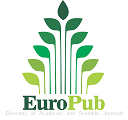Karakteristik Yoghurt Probiotik Rosella Berbahan Baku Susu Kambing dan Susu Sapi Selama Penyimpanan Suhu Ruang
Keywords:
rosella, goat milk, cow milk, yoghurt probiotic, lactic acid bacteria
Abstract
Yogurt is a milk-based fermented products using Lactobacillus bulgaricus and Streptococcus thermophilus bacteria, as the starters, or any compatible lactic acid bacteria (LAB). Recently, probiotic yoghurt has been developed by adding LAB displaying probiotic properties, such as Lactobacillus acidophilus, L. casei, and Bifidobacterium. Yoghurt has also been developed with the addition of some natural ingredients, including rosella (Hibiscus sabdariffa L), which was known to exhibit antioxidant and antibacteria activities. Accordingly, the addition of rosella extract into yoghurt could increase human’s health. This research aims to investigate the characteristics of probiotic yogurt with the addition of 1% rosella extract on different storage period at room temperature with the use of goat’s milk and cow’s milk as ingredients. The results showed that there were no interaction between type of yoghurt (goat’s milk and cow’s milk) and storage duration (0, 4, 8, 12, 16, and 20 hours) at room temperature (29–30 oC) to all of tested variables. Different types of yogurt significantly affected (P>0.05) pH and highly significantly affected (P>0.01) on viscocity, water activity, and total lactic acid. Different storage duration highly significantly affected (P>0.01) on total lactic acid, pH, and total LAB. Tambahkan satu kalimat yang menyimpulkan hasil organoleptik kemudian ditutup dengan kalimat : In overall, the products remain to be under acceptable standar to be consumed during 20 hour storage at room temperature.Downloads
Download data is not yet available.
Published
2019-05-24
How to Cite
RachmanA., TaufikE., & AriefI. I. (2019). Karakteristik Yoghurt Probiotik Rosella Berbahan Baku Susu Kambing dan Susu Sapi Selama Penyimpanan Suhu Ruang. Jurnal Ilmu Produksi Dan Teknologi Hasil Peternakan, 6(2), 73-80. Retrieved from https://journal.ipb.ac.id/index.php/ipthp/article/view/26182
Section
Articles















